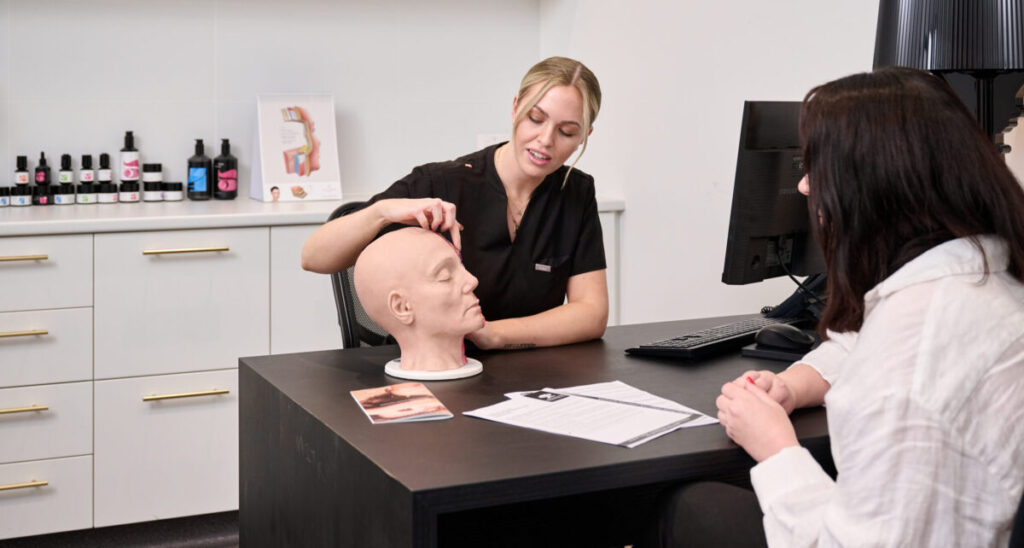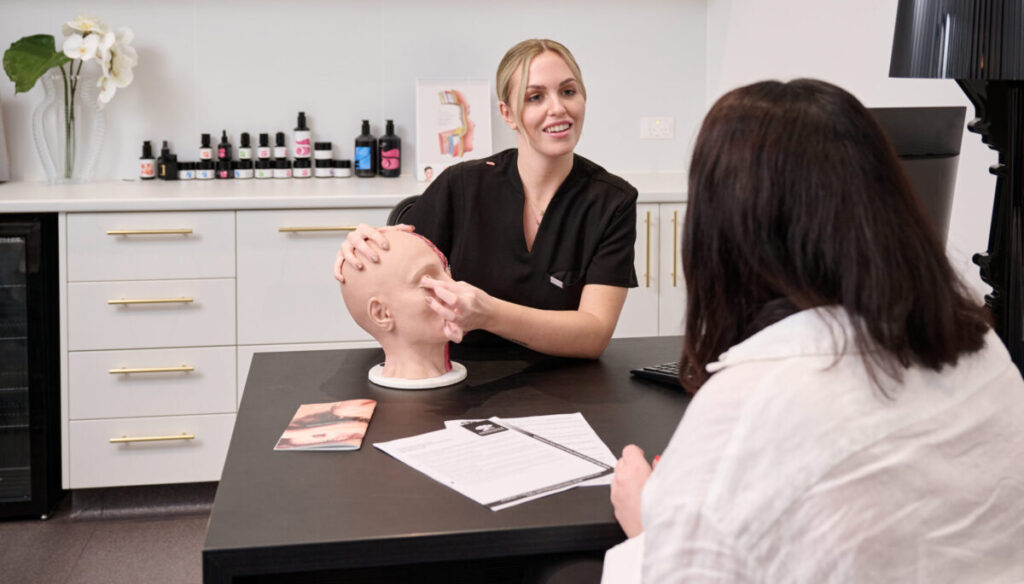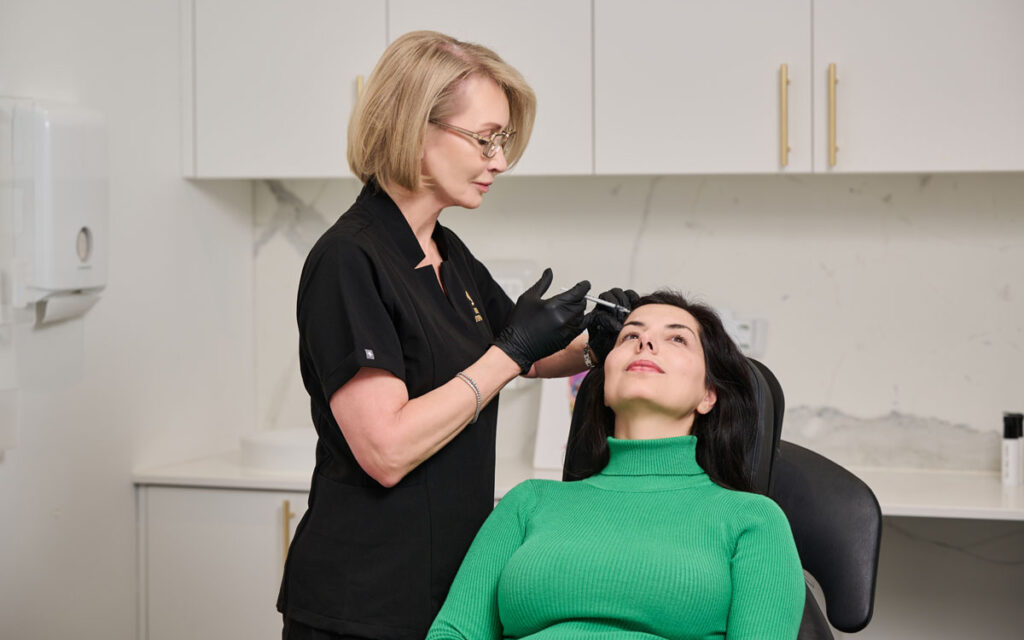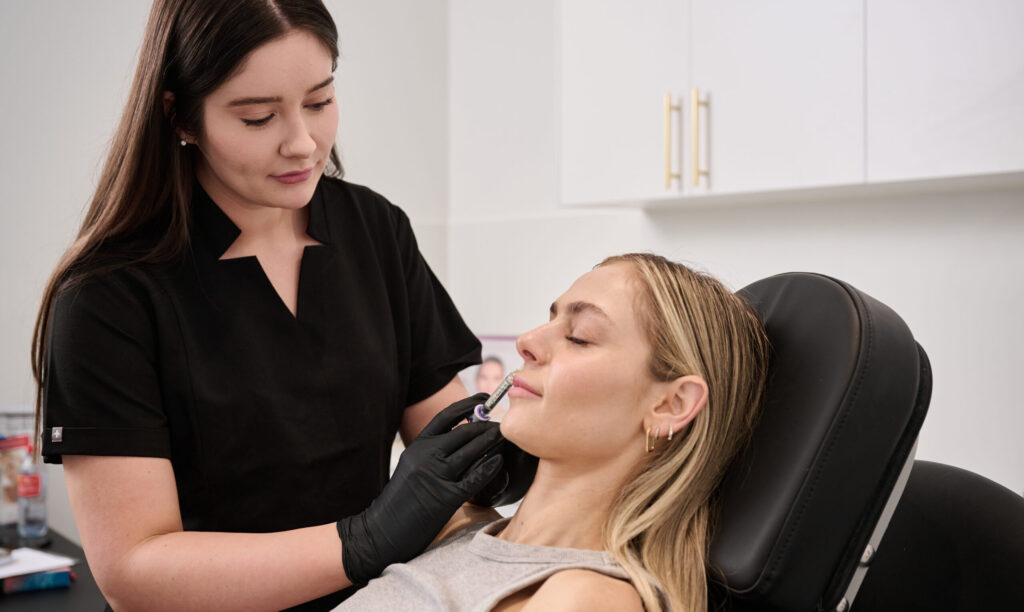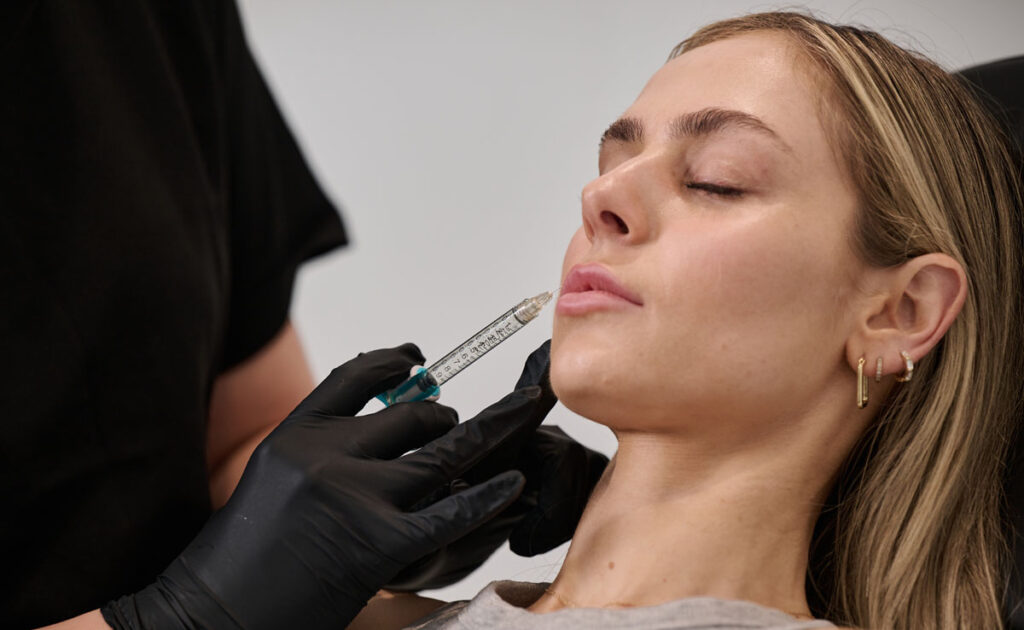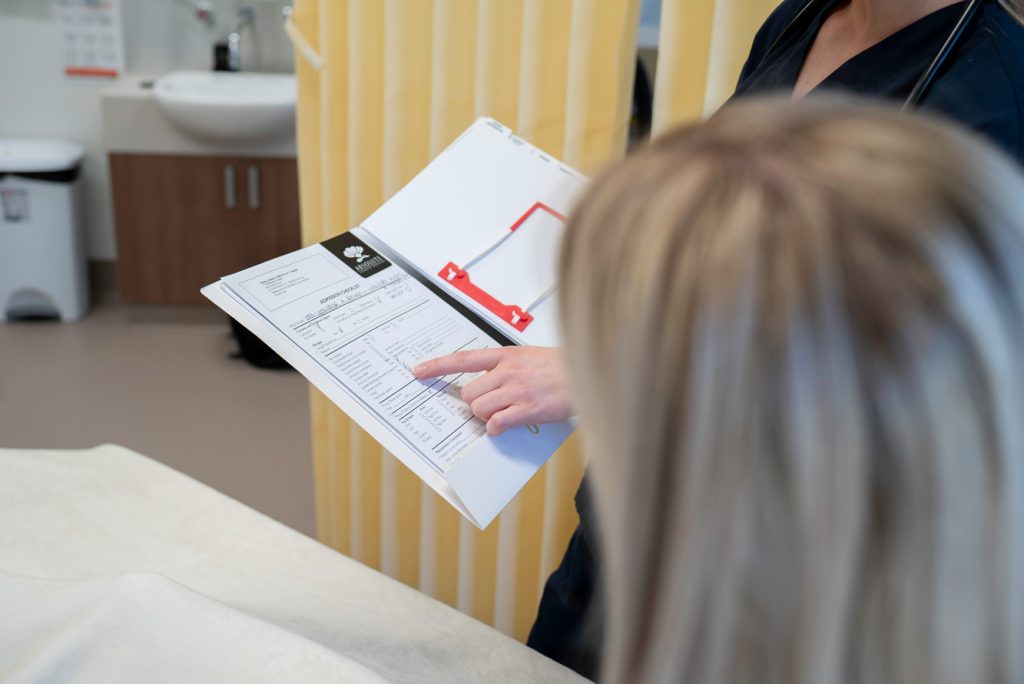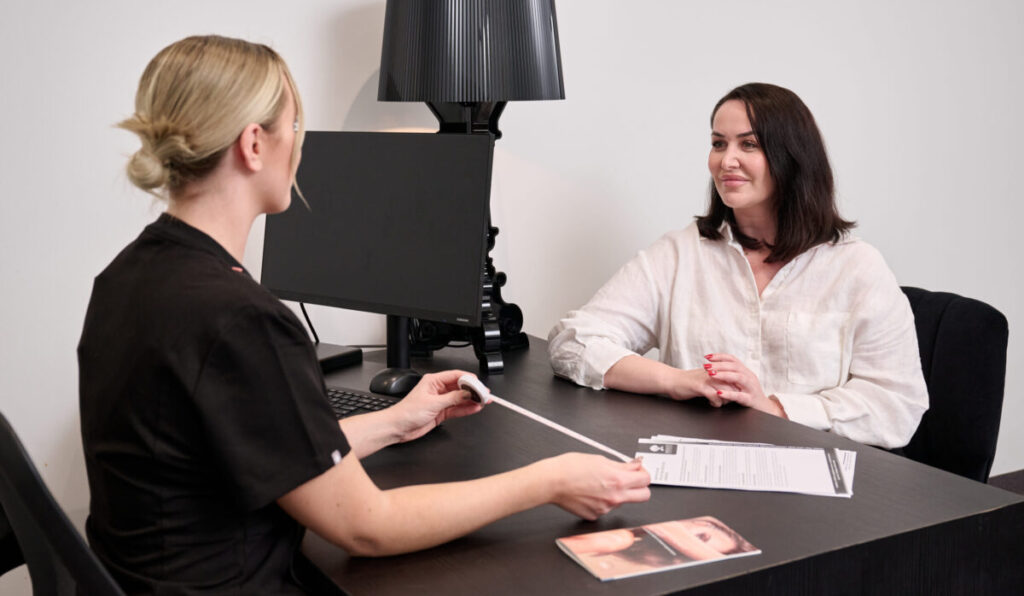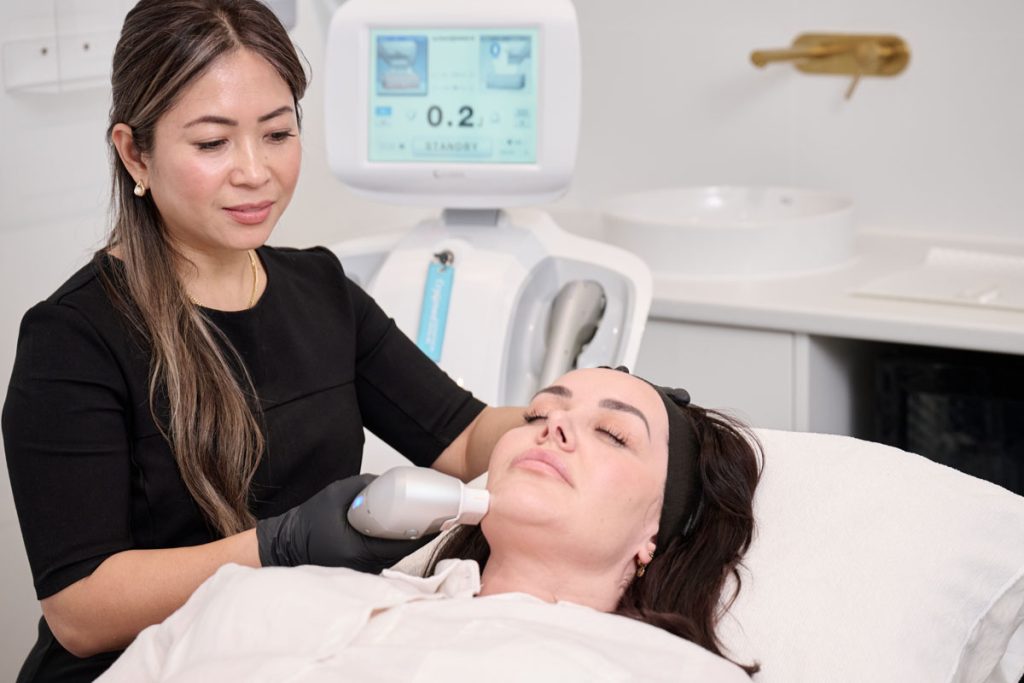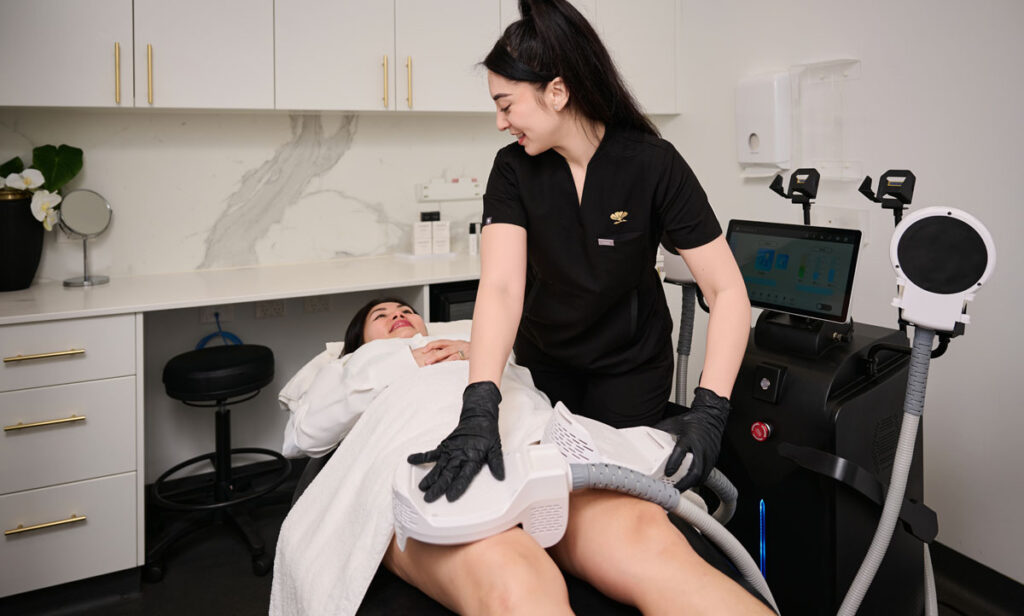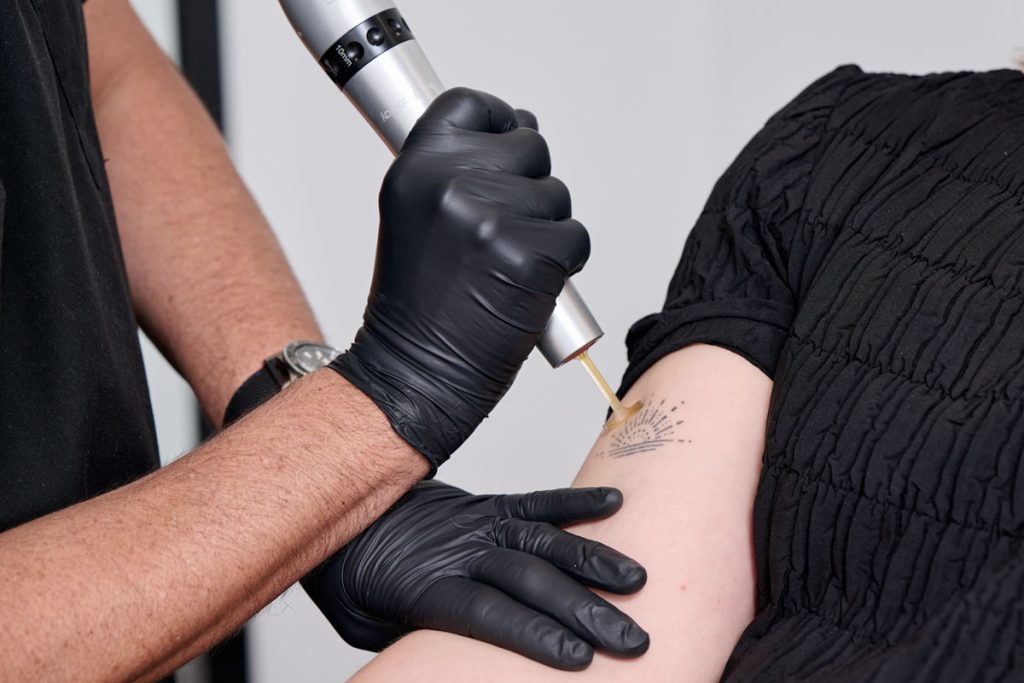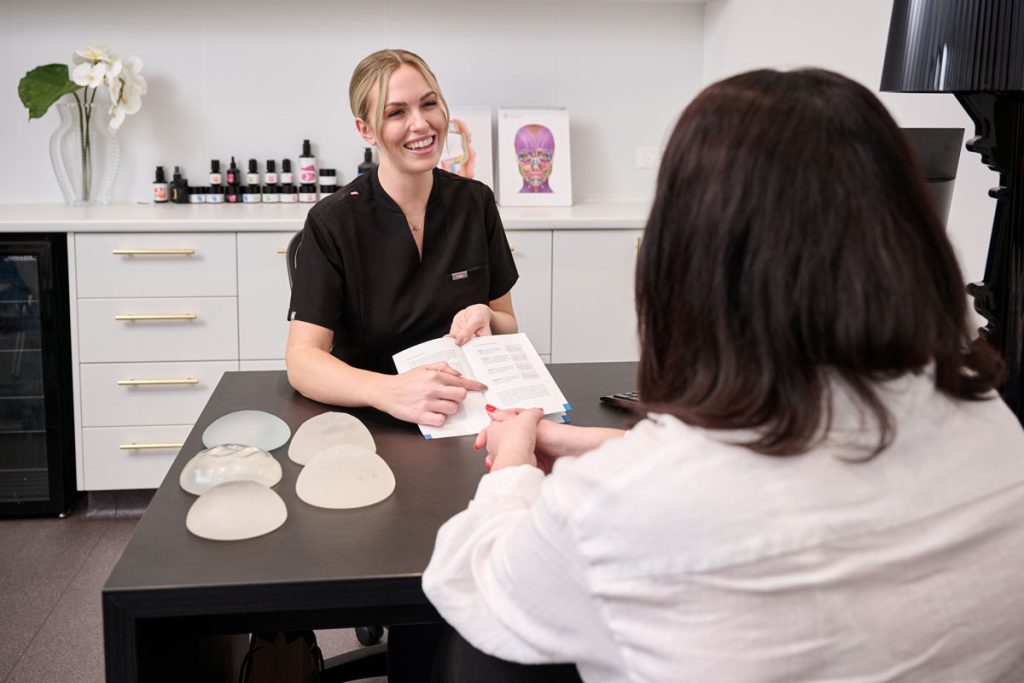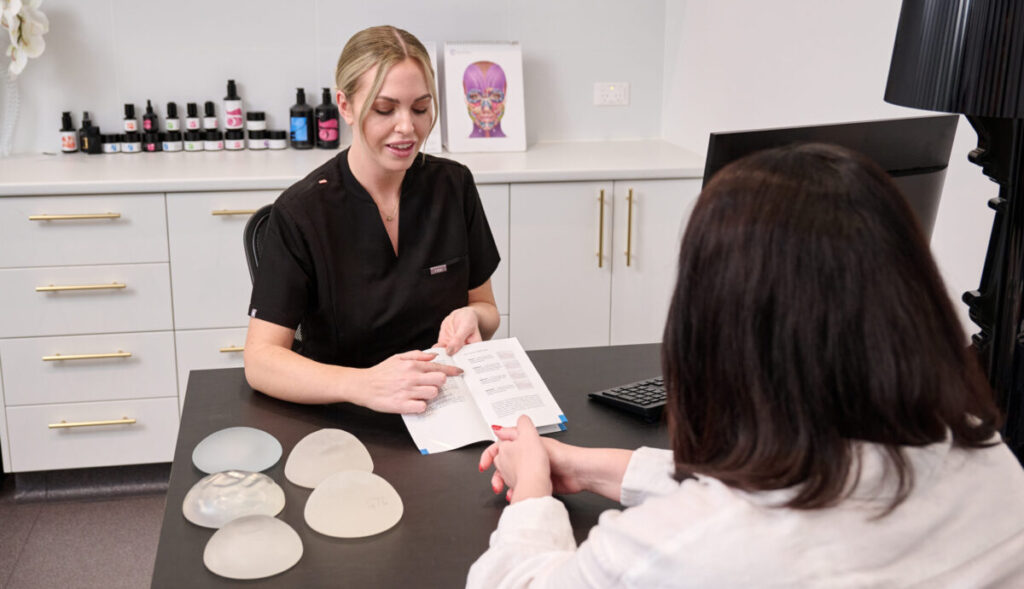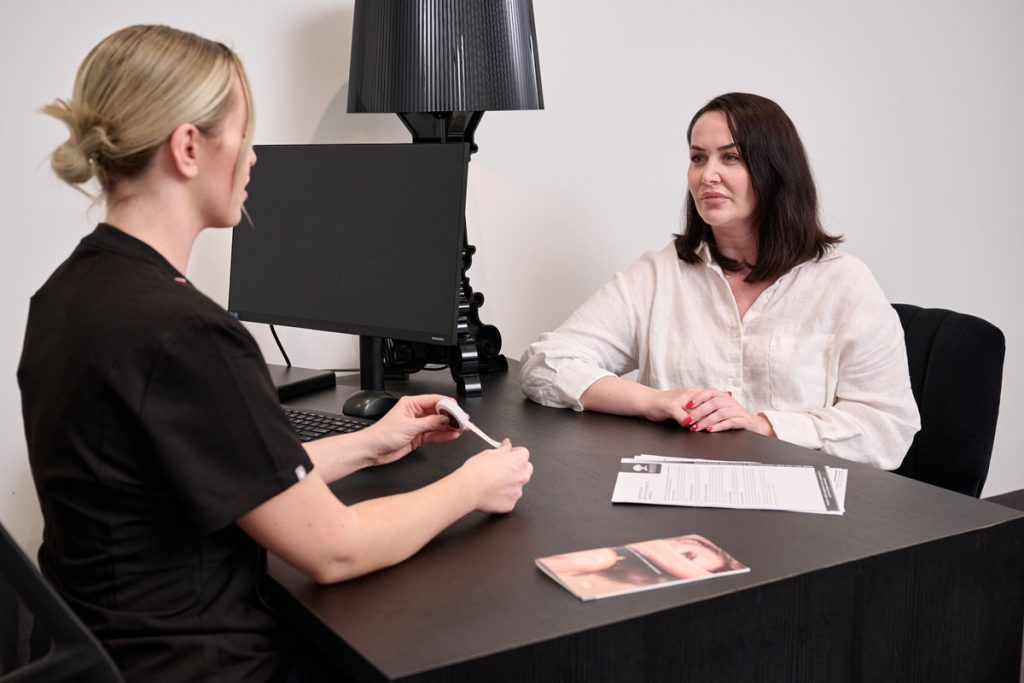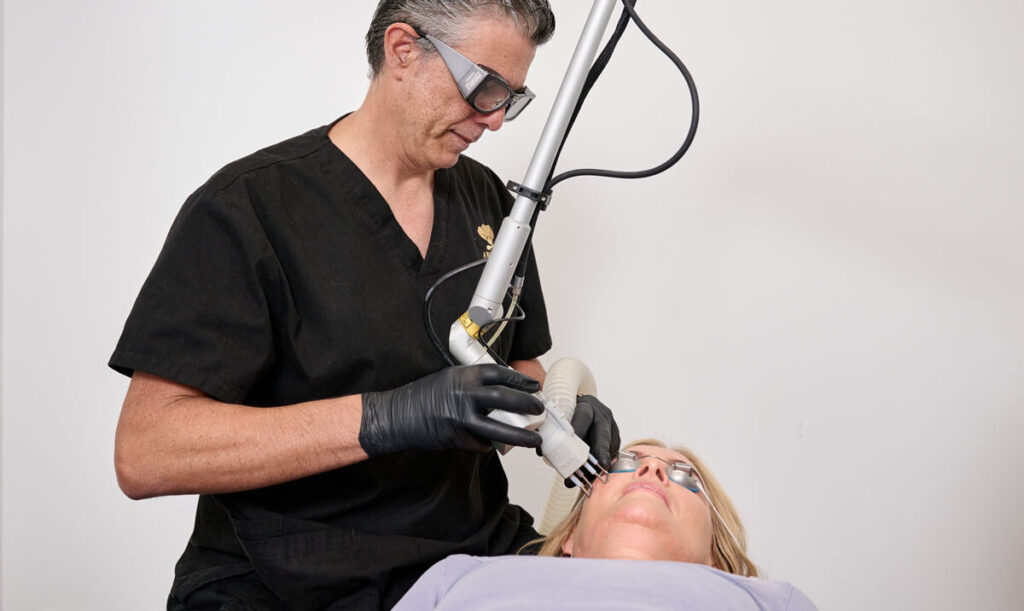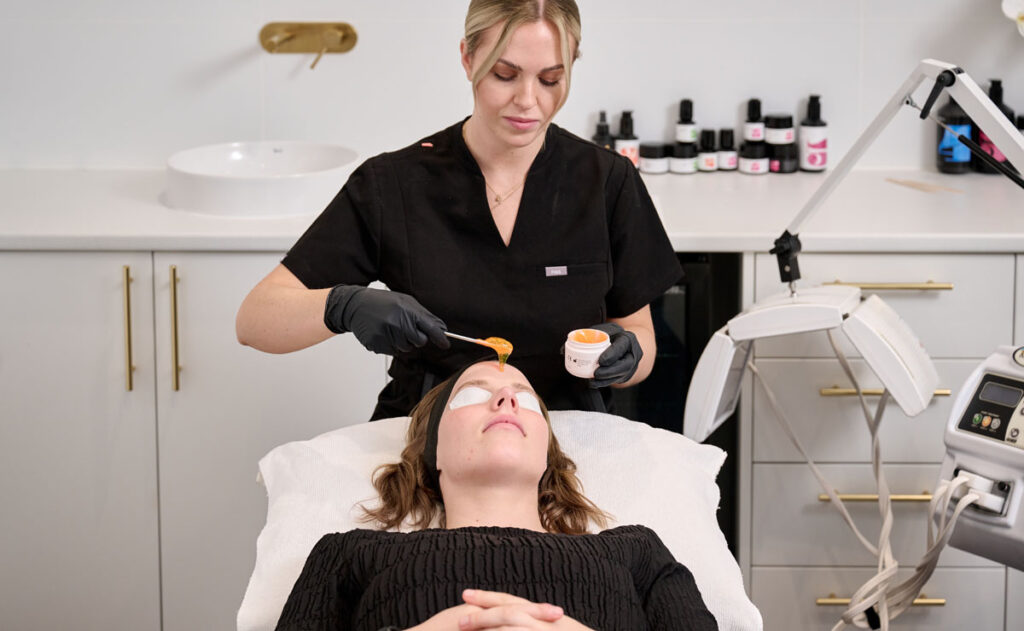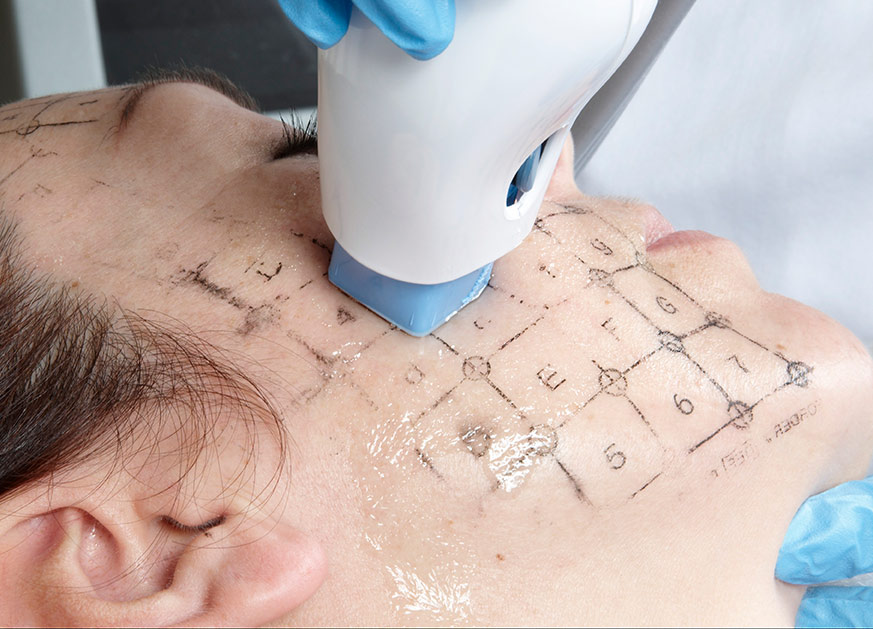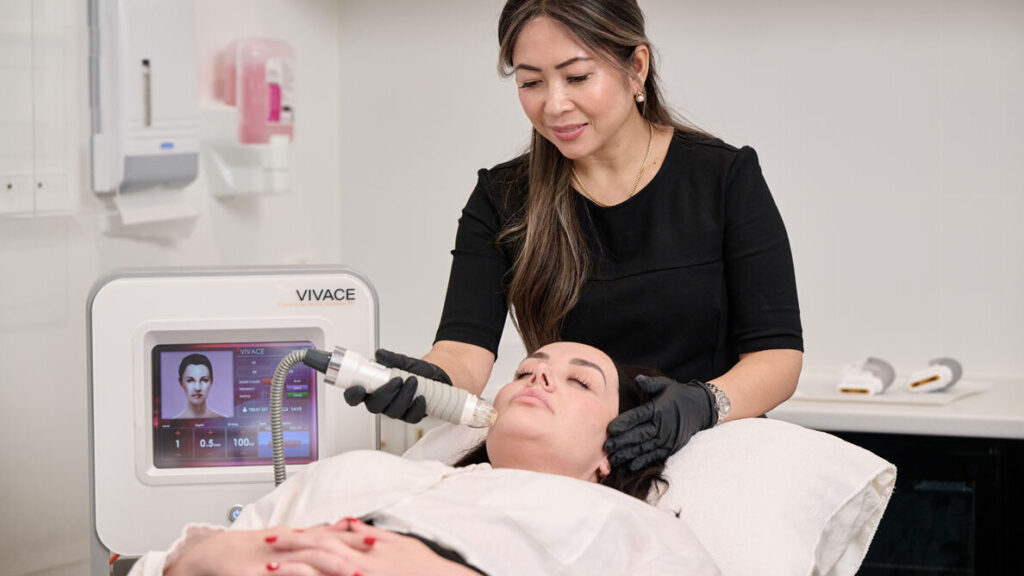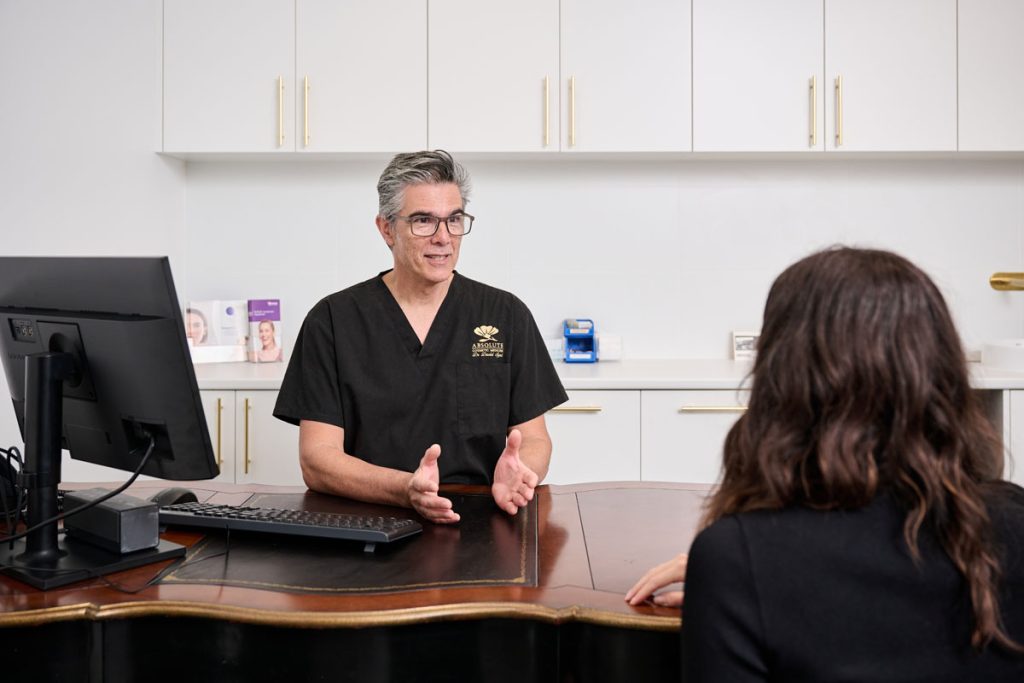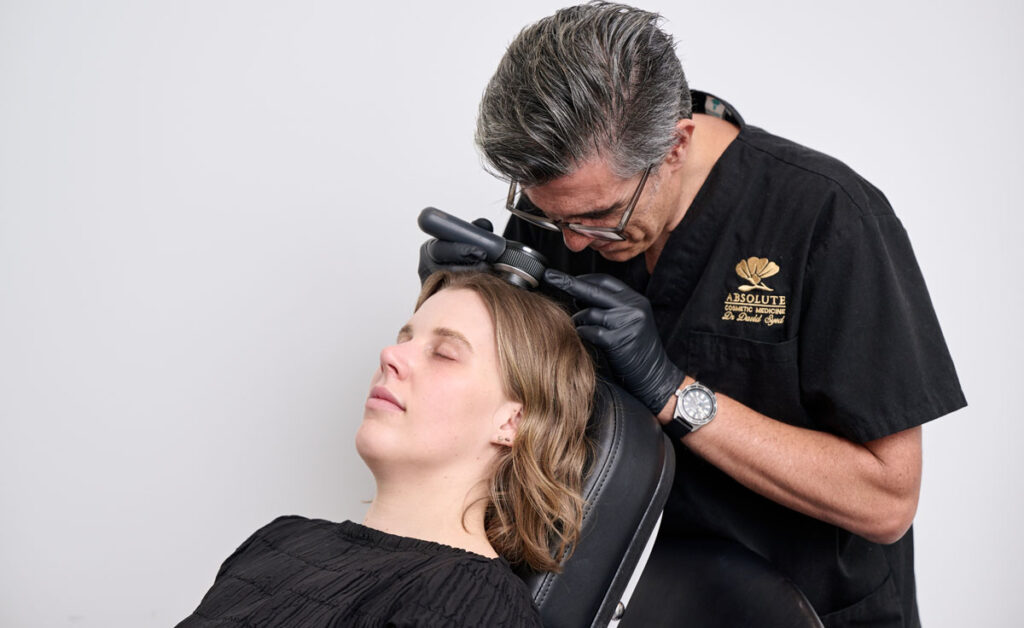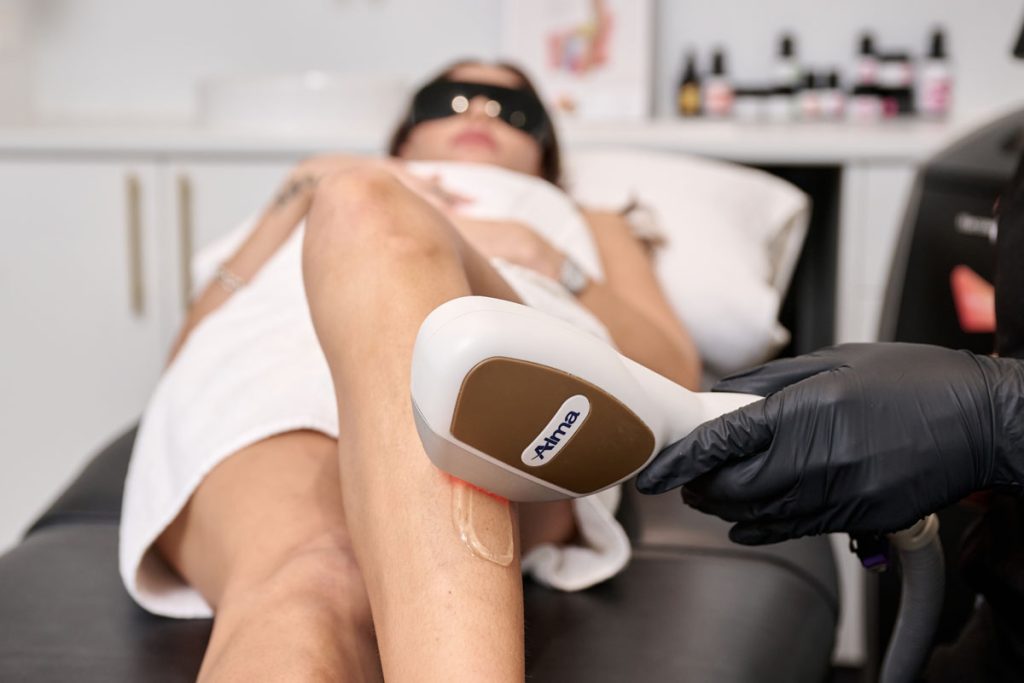Non-surgical jaw augmentation
Non-surgical jaw augmentation, offers individuals an option to enhance their jawline without resorting to invasive surgery. This approach employs various methods and treatments to reshape the jawline, aiming for improved symmetry and definition without the need for incisions. Non-surgical jaw augmentation, while offering a less invasive alternative to surgical procedures, is not without its risks, potential complications, and discomfort. It’s important for individuals considering this option to be aware of these factors, and we will discuss them thoroughly with you during your consultation.
One popular technique in non-surgical jaw augmentation involves the use of injectable substances that stimulate collagen production. These injections, often composed of bio-stimulatory agents, work to add volume and structure to the jawline, effectively contouring it and creating a more defined appearance.
Who is a suitable candidate for non-surgical jaw augmentation?
Non-surgical jaw augmentation can be suitable for a wide range of individuals who are looking to enhance the appearance of their jawline without undergoing invasive surgery. Generally, suitable candidates for this procedure may include:
- Individuals in good overall health: Candidates for non-surgical jaw augmentation should be in good general health and have no contraindications to the specific treatments being considered. A thorough medical assessment will help determine suitability for the procedure and will be done by your treating nurse at the time of your appointment.
- Those with asymmetry: Non-surgical techniques can be used to address asymmetry in the jawline, helping to achieve a more symmetrical facial appearance.
- People with mild to moderate signs of aging: As we age, the jawline can lose definition and sag due to the natural loss of collagen and elastin in the skin.
- Patients with realistic expectations: It’s essential for individuals considering non-surgical jaw augmentation to have realistic expectations about the procedure’s potential outcomes. While this approach can enhance the appearance of the jawline, it may not achieve the same dramatic results as surgery.
It’s important for individuals interested in non-surgical jaw augmentation to consult with one of our nursing team, who can assess their specific concerns, aesthetic goals, and medical history to determine the most appropriate treatment plan for them.
Why choose non-surgical jaw augmentation
- Minimally Invasive: Non-surgical procedures typically involve injections or energy-based treatments that do not require incisions or surgical manipulation. This means less trauma to the tissues, reduced risk of scarring, and shorter recovery times compared to surgery. However, it still carries risk and results may vary from person to person. We encourage you to do your research or book in for a consult with our nursing team for further information and questions.
- Minimal Downtime: Since non-surgical jaw augmentation procedures are minimally invasive, most individuals can resume their regular activities shortly after treatment. There’s typically minimal downtime compared to the recovery period required after surgery.
- Customizable Results: Non-surgical treatments offer a high degree of customization, allowing our nursing team to tailor the approach to each individual’s specific aesthetic goals and facial anatomy.
- Gradual and Subtle Changes: Non-surgical procedures often provide gradual and subtle changes to the jawline, allowing for adjustments over time to achieve the desired result gradually. This can be appealing for individuals who prefer a more conservative approach to cosmetic enhancements.
- Temporary Results: Many non-surgical methods offer temporary results, which can last from several months to a couple of years. This temporary nature allows individuals to experiment with different looks and decide whether they want to pursue more permanent options in the future.
- Cost-Effective: Non-surgical jaw augmentation procedures typically cost less than surgical options, making them more accessible to a broader range of individuals who may be on a budget or prefer to invest gradually in their aesthetic enhancements.
- Low Commitment: Non-surgical procedures provide a lower level of commitment compared to surgery. If an individual is unsure about making permanent changes to their appearance or prefers to try out a less permanent option first, non-surgical treatments can be an excellent starting point.
Ultimately, the decision to choose non-surgical jaw augmentation depends on individual preferences, aesthetic goals, and medical considerations. Consulting with our nursing team can help individuals determine the most suitable approach for achieving their desired results safely and effectively.
What are the differing aesthetic goals for non-surgical jaw augmentation in males and females?
For Males:
- Enhanced Masculinity: Many males seek non-surgical jaw augmentation to achieve a more masculine and chiselled jawline. This typically involves adding volume and definition to the jaw to create sharper angles and a more pronounced appearance.
- Strong Jawline: Males often desire a strong and defined jawline that compliments their facial features. Non-surgical procedures can help achieve a square or angular jawline, which is considered a hallmark of masculinity.
- Facial Symmetry: Male aesthetic preferences may lean towards achieving facial symmetry, including a balanced jawline that compliments other features such as the nose and chin.
- Youthful Appearance: Non-surgical jaw augmentation can also be used to address signs of aging, such as sagging skin or loss of definition in the jawline.
For Females:
- Softened Features: While some females may desire a defined jawline, others may prefer a softer and more rounded appearance. Non-surgical techniques can help achieve a subtle enhancement while maintaining feminine facial contours.
- V-Shaped Jawline: A V-shaped jawline, where the jaw tapers towards the chin. Non-surgical procedures can help create a smoother transition from the jaw to the neck, enhancing overall facial harmony.
- Facial Balance: Females may prioritize achieving facial balance and proportion, aiming for a jawline that harmonizes with other features such as the cheeks and lips.
- Youthful Rejuvenation: Similar to males, females may seek non-surgical jaw augmentation to address signs of aging, such as loss of volume or sagging skin.
It’s important to note that these aesthetic goals can vary widely among individuals, regardless of gender. Your nurse will work closely with you to understand your specific preferences and tailor the treatment plan to your desired outcome.
Other Considerations
- Depending on the patient’s individual concerns and anatomy, a combination of treatments may be required. This might include masseter injections to relax and slim the back area of the jaw.
- Neckbands insert into the jawline. By relaxing these, there is less of a pull on the jawline, which over time preserves its sharpness.
- DAO’s’- helps again the muscles that pull the corners of the mouth down, by releasing that it will help give a lift.
- Mentalis (chin): The chin muscle action is to lift and elevate, which can cause a shortening of the chin and chin creases. If you relax, it can often lengthen it.
What are some side effects to non-surgical jaw augmentation?
Non-surgical jaw augmentation, like any cosmetic procedure, may come with potential side effects. It’s important for individuals considering this treatment to be aware of these potential side effects and discuss them with their nurse when you come into our Absolute clinic. Some possible side effects of non-surgical jaw augmentation may include:
- Bruising: Bruising at the injection sites is a common side effect of non-surgical procedures, particularly when using injectable substances. This bruising is usually temporary and resolves on its own within a few days to a week.
- Swelling: Swelling is another common side effect, especially in the immediate aftermath of the procedure. Swelling typically subsides within a few days, but in some cases, it may persist for longer, depending on the individual’s response to the treatment.
- Redness: Redness or irritation at the injection sites may occur, particularly with certain types of injectable substances. This redness is usually mild and resolves quickly but may persist for a few days in some cases.
- Tenderness or Discomfort: Some individuals may experience tenderness or discomfort at the injection sites or in the treated area.
- Allergic Reactions: While rare, allergic reactions to the substances used in non-surgical jaw augmentation procedures are possible. Symptoms of an allergic reaction may include itching, rash, or swelling beyond the injection site. It’s essential to inform your nurse of any allergies or sensitivities before undergoing treatment.
- Infection: Although rare, there is a risk of infection at the injection sites.
- Numbness or Sensation Changes: Temporary numbness or changes in sensation in the treated area may occur but typically resolve on their own within a few days to weeks.
It’s essential to discuss potential side effects and risks with your nurse before undergoing non-surgical jaw augmentation. By understanding the potential risks and benefits of the procedure, you can make an informed decision about whether it’s the right option for you.
What can you do to prepare
Preparing for non-surgical jaw augmentation involves several steps to ensure a smooth and successful procedure and recovery. Here are some guidelines to help you prepare:
- Consultation: Schedule a consultation with a qualified healthcare provider who specializes in non-surgical facial aesthetics. During this consultation, discuss your aesthetic goals, medical history, and any concerns you may have. Your provider will assess your facial anatomy and recommend the most suitable treatment plan for you.
- Medical Evaluation: Be prepared to provide detailed information about your medical history, including any allergies, medical conditions, medications, or previous cosmetic procedures. Your healthcare provider will evaluate your overall health to determine if you are a suitable candidate for non-surgical jaw augmentation.
- Avoid Blood Thinners: In the days leading up to your procedure, avoid medications and supplements that can thin the blood and increase the risk of bruising. This may include aspirin, ibuprofen, naproxen, vitamin E, fish oil, and certain herbal supplements. If you aren’t sure, please feel free to call our clinic to confirm.
- Stay Hydrated: Maintain good hydration by drinking plenty of water in the days leading up to your procedure. Hydrated skin can improve the results of non-surgical treatments and aid in the recovery process.
- Quit Smoking: If you smoke, consider quitting or reducing your smoking in the weeks leading up to your procedure. Smoking can impair healing and increase the risk of complications, such as delayed wound healing and infection.
- No alcohol: We suggest no alcohol for 24 hours prior to your appointment.
- Pre-exisiting infections: if you have any dental infections or cold sores, we will need to postpone your appointment until you are healthy and well.
- Avoid any dental work: If you have any dental procedures coming up, postpone your appointment with us, until after your dental procedure.
- Follow Post-procedure Instructions: Your nurse will provide you with post-procedure instructions to follow. This may include guidelines for caring for the treated area, managing discomfort, and when to follow up for a post-procedure evaluation.
